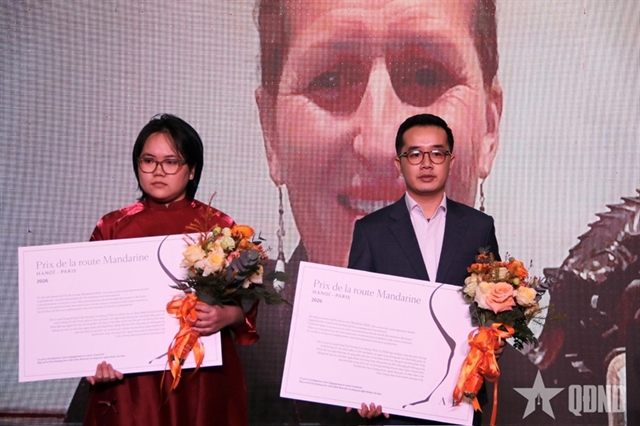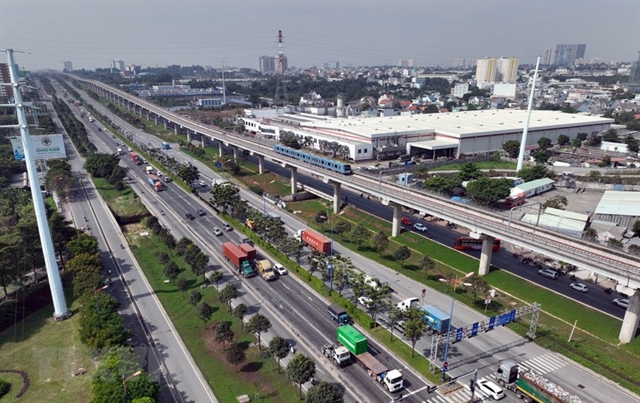 Society
Society


|
| The elevated section of the urban railway Metro Line No 1. VNA/VNS Photo Mạnh Linh |
HCM CITY — Nearly 30 technicians and managers attended a training class on Saturday in preparation for the operation of urban railway Metro Line No 1 (Bến Thành-Suối Tiên) in HCM City.
According to Akira Hosomi, operation and maintenance specialist of NJPT Contractors Consortium, HCM City’s Metro line No. 1 using Japanese technology is the first project in Việt Nam that Japanese experts have transferred know-how to Vietnamese operators.
The first generation of trainees will act as the core human resources to support the development of the future urban railway system in Việt Nam and in HCM City in particular, he said.
He said that the trainees will be equipped with sufficient knowledge, and skills to safely and effectively operate and exploit the metro line as well as prepare for the next steps of the project.
According to the Urban Railway Management Board, work on Metro Line No1 is 94.38 per cent complete after 10 years of construction.
Metro Line No. 1 has a total investment of over VNĐ43.7 trillion (US$1.9 billion).
It is about 19.7km in length with three underground stations, including Bến Thành, HCM City Opera House, Ba Son, and 11 flyover stations, including Văn Thánh, Tân Cảng, Thảo Điền, An Phú, Rạch Chiếc, Phước Long, Bình Thái, Thủ Đức, High-tech Zone, HCM City National University and Suối Tiên Terminal.
The project was initially scheduled for completion in late 2021 to run commercially in 2022, but then delays hit due to the pandemic and procedural problems.
The first test ran on nine kilometres of elevated track between Suối Tiên Station and Bình Thái Station on December 21 last year.
The elevated section is designed for trains to run at a speed of 110 kilometres per hour, but during the test run the train ran at a speed of 40kph.
All 17 trains have 147 seats and a capacity of 930 passengers. They can run at speeds of up to 80km underground. — VNS




